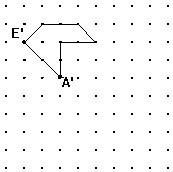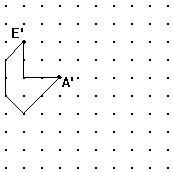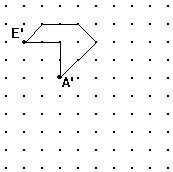Solve the problem.The rates of death (in number of deaths per 100,000 population) for 1-4 year olds in the United States between 1980-1995 are given below. (Source: NCHS Data Warehouse)  A logarithmic equation that models this data is y = 822.99 - 167.55 ln x where x represents the number of years since 1900. Use this equation to predict the rate of death for 1-4 year olds in 2005.
A logarithmic equation that models this data is y = 822.99 - 167.55 ln x where x represents the number of years since 1900. Use this equation to predict the rate of death for 1-4 year olds in 2005.
What will be an ideal response?
43.2 deaths per 100,000
You might also like to view...
Solve the problem.A rotation has sent A to A' and E to E'. Find the image of the given figure.
A. 
B. 
C. 
D. 
Evaluate the expression using the given value of the variables.(x + 4y)2 for x = 2, y = 2
A. 100 B. 10 C. 36 D. 20
Solve the problem.Newton's Law of Cooling states that the rate of change of temperature of an object is proportional to the difference in temperature between the object and the surrounding medium. Thus, if T is the temperature of the object after t hours and T0 is the (constant) temperature of the surrounding medium, then where k is a constant. A cup of coffee with a temperature of 101°F is placed in a freezer with a temperature of 0°F. After 5 minutes, the temperature of the coffee is 67°F. What will its temperature be 16 minutes after it is placed in the freezer? Round your answer to the nearest degree.
where k is a constant. A cup of coffee with a temperature of 101°F is placed in a freezer with a temperature of 0°F. After 5 minutes, the temperature of the coffee is 67°F. What will its temperature be 16 minutes after it is placed in the freezer? Round your answer to the nearest degree.
A. 23°F B. 25°F C. 27°F D. 21°F
Solve the problem. Round your answer, as needed.The rate of return of certain investments increases as the risk factor of the investment increases. An investment with a risk factor of 2 has a rate of return of 5.0%. An investment with a risk factor of 22 has a rate of return of 17.0%. What is the average rate of return per unit of risk?
A. 1.67% per unit risk B. 0.88% per unit risk C. 0.60% per unit risk D. 1.13% per unit risk